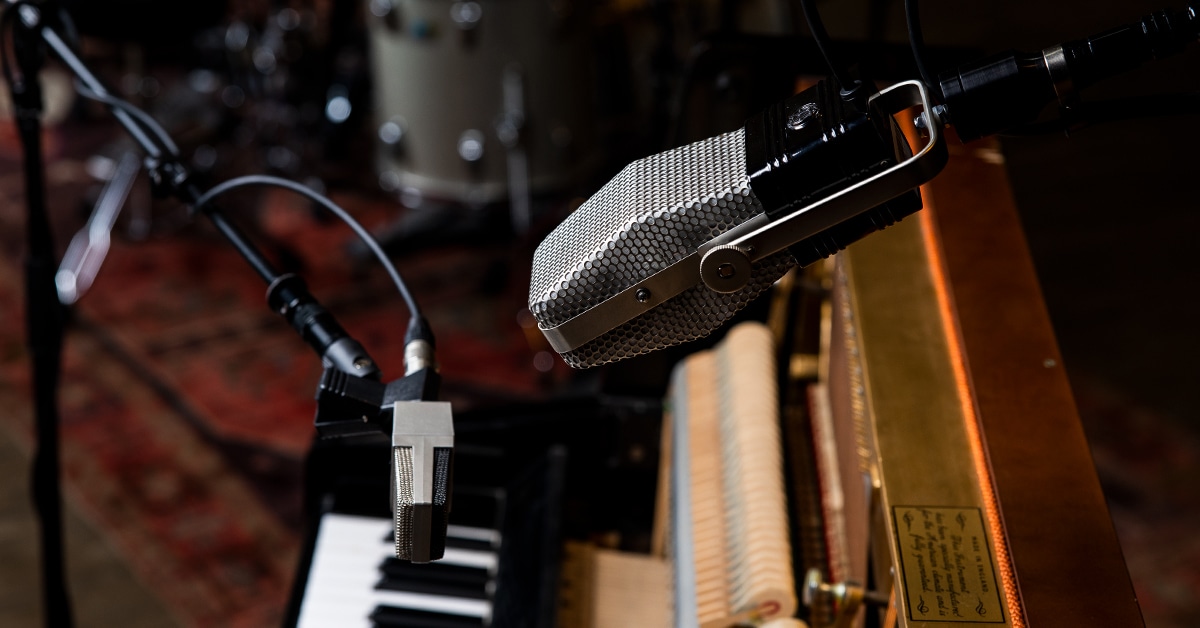So many microphones. The choices can be daunting—especially if you simply want to peruse the best mics for recording vocals, or guitar amps, or drums or even seek a good-quality, all-purpose model for a number of home-studio applications. This guide cuts right to the chase, and delivers a concise, easy-to-follow roadmap to some excellent microphones, explains what they do best and details the reasons they may be the top choices for your needs.
At this point, we should also warn you the history of recorded music absolutely overflows with brilliant engineers and iconoclasts who defied rules, expectations and the so-called limits of technology. The very instant we recommend a specific mic for recording vocals, someone out there will use it to capture the sound of a Taiko drum to magnificent effect. Learn the conventional wisdom, but never be afraid to experiment and follow your gut. Start here…
Table of Contents
Three Types of Mics
Our Top Dynamic Microphone Picks
Comparing the Best Dynamic Mics
Our Top Condenser Microphone Picks
Comparing the Best Condenser Mics
Our Top Ribbon Microphone Picks
Comparing the Best Ribbon Mics
Our Top Stereo Microphone Picks
Comparing the Best Stereo Mics
Mic It Up
Three Types of Mics
In looking at this collection of what we feel are essential mics, we’ll be covering the three principle types you’ll find on the market today—dynamic, condenser and ribbon microphones. Each type of mic has strengths and weaknesses in different applications, but, as we touched on above, sometimes breaking those rules is the way to find the sound you’ve been looking for. But it’s important to know what those rules are and where breaking them might also break the mic. For each section, for those who love to geek out on gear, we’ll also point you at one of a series of companion articles on how a particular type of mic works.
Our Top Dynamic Microphone Picks
Dynamic mics are the workhorses of pro audio. Durable, virtually bulletproof, capable of handling extremely high SPL, you can slap one pretty much anywhere and get good sound. No less than Eddie Kramer, who was one of the sound and recording engineers at the 1969 Woodstock Rock Festival, told us that everything was miked and recorded with the venerable Shure SM57. If you’re looking to learn a little more about what makes a dynamic microphone tick, check out our companion article How Dynamic Mics Work for details.
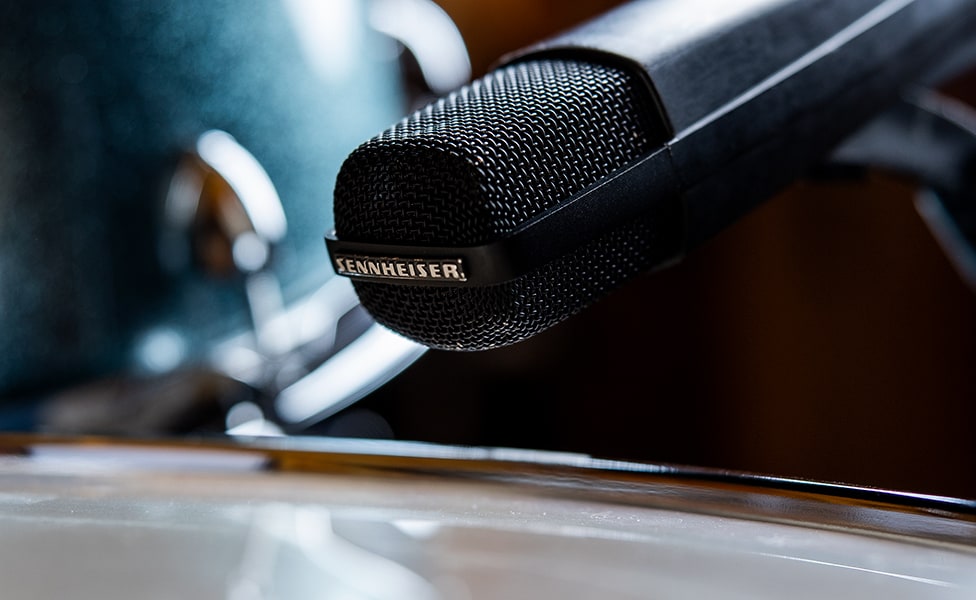
Pictured: Sennheiser MD 421-II Dynamic Microphone
Comparing the Best Dynamic Mics
In this section, we’re going to look at dynamic mics with a focus on function. For dynamic mics, that dividing line is generally between mics that are primarily vocal mics, and ones that are instrument mics, though, as you’ll see, there can be a fair amount of crossover. With that in mind, let's dive right in.
|
Dynamic Microphone |
Polar Pattern |
Frequency Response |
Applications |
|
Hypercardioid |
30Hz–20kHz |
Toms, kick drum, electric guitar, vocals |
|
|
Supercardioid |
50Hz–17kHz (D89), 50Hz–16kHz (D90) |
Vocals, drums, brass, strings |
|
|
Cardioid |
45Hz–18kHz |
Vocals, kick drum, bass, floor tom |
|
|
Supercardioid |
40Hz–19kHz |
Vocals, drums, electric guitar, horns |
|
|
Cardioid |
50Hz–18kHz |
Vocals, strings, acoustic guitar, percussion |
|
|
Cardioid |
40Hz–15kHz (SM57), 50Hz–15kHz (SM58) |
Vocals, electric guitar, snare, acoustic guitar |
|
|
Cardioid |
50Hz–20kHz |
Vocals, electric guitar, bass, drums |
|
|
Cardioid |
30Hz–17kHz |
Toms, snare, electric guitar, vocals |
|
|
Supercardioid |
30Hz–20kHz |
Vocals, strings, electric guitar, drums |
|
|
Cardioid |
30Hz–15kHz |
Kick drums, bass amps, percussion, guitar cabs |
beyerdynamic M88
Why It's Cool: The beyerdynamic M 88 has been a top all-around performer for over 60 years, boasting a wide array of applications and true-to-source sound reproduction.
Things to Consider:
- Flat, neutral frequency response for accurate recordings
- High sensitivity doesn’t eat up preamp gain
- Pronounced proximity effect
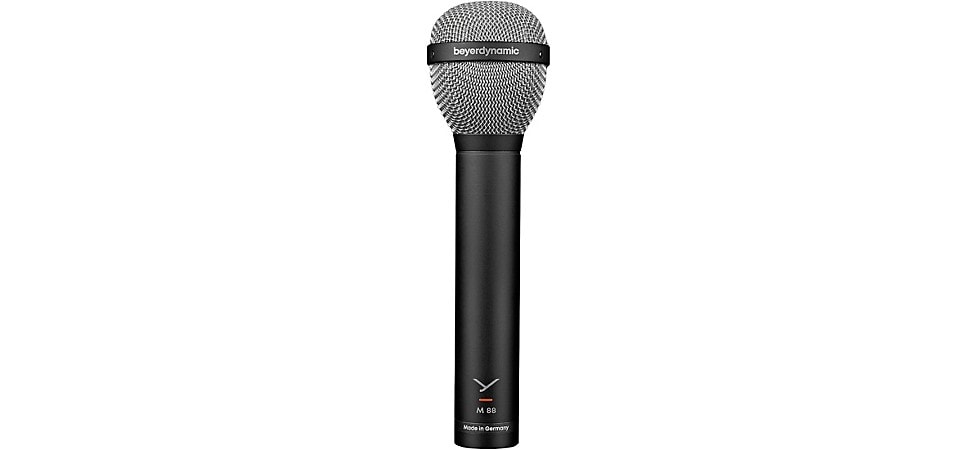
Shop Now: beyerdynamic M88 Dynamic Microphone
Handmade in Germany since the early ’60s, the beyerdynamic M 88 moving-coil microphone features a broadly transparent tonality that’s simultaneously rich in lows, naturally adding weight to close-miked instruments and voices. It’s a go-to favorite for kick drum, electric guitar and bass, vocals and even saxophone. Plus, with a hypercardioid pickup pattern, the M 88’s ultraprecise directionality virtually eliminates crosstalk on stage, so it’s as reliable in live sound environments as it is in the studio.
In addition to being assembled at the company headquarters in Heilbronn, all sonically impactful components are built there as well—an increasingly rare practice in this day and age. Alternatively, the beyerdynamic M 201 is a unique dynamic pencil microphone utilizing the same ultralow-mass Hostaphan diaphragm found in the M 88.
CAD Audio CADLive D89/D90
Why It's Cool: The CAD Audio CADLive D89 instrument and D90 handheld microphones offer outstanding off-axis rejection, in addition to greater sensitivity than many moving-coil mics.
Things to Consider:
- Trademark TrueFlex diaphragm offers articulate response
- Hotter-than-average signal from high-gauss neodymium magnet
- Includes hard case and mic clip
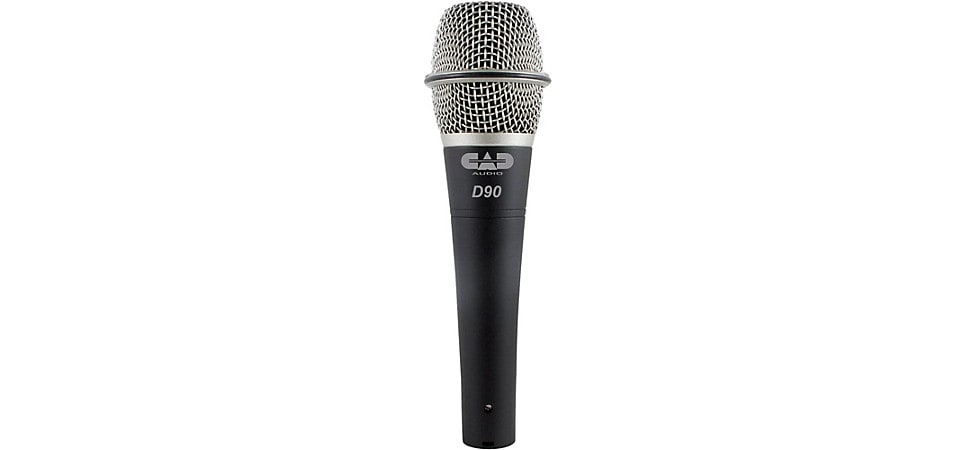
Shop Now: CADLive D90 Supercardioid Dynamic Microphone
A sleeper choice for instrument and vocal mics, the CADLive D89 and D90 start from very similar capsules, with the differences in engineering being that the D89 is tweaked for instrument use and the D90 for vocalists. No newcomer to mic design, CAD Audio is descended in part from the old Astatic mic line, which were popular mics in the world of radio. One big plus for CADLive is that they stand behind their mics with a lifetime warranty against defects.
Electro-Voice RE20
Why It's Cool: A lauded broadcast microphone capable of pristine vocal capture, the Electro-Voice RE20 is excellent on kick drum and bass, too.
Things to Consider:
- Proprietary Variable-D technology mitigates proximity effect
- Accentuated, tight bass response flatters voices and low-end dominant instruments
- Heavy-duty internal pop filter and shockmount
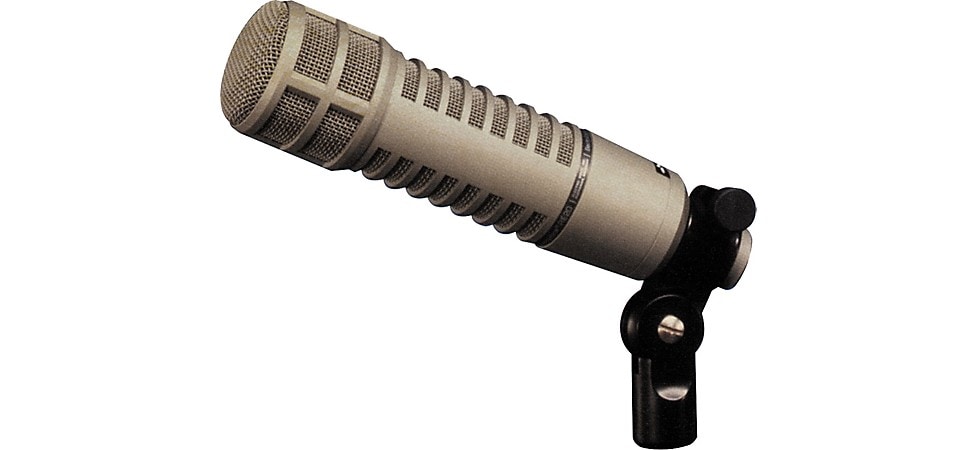
Shop Now: Electro-Voice RE20 Dynamic Cardioid Microphone
Another studio icon that doubles as a preferred choice for many touring bands, the Electro-Voice RE20—like the SM7B—made its reputation in the studio and the broadcast booth for vocals, both spoken and sung, but it also shines as a mic for guitar amps, drums, brass and other high-SPL applications. Introduced in 1969, the RE20 started life aiming at being a full-range, dynamic alternative to condenser mics, and it’s suitable for just about any application where you’d use a large-diaphragm condenser. In fact, despite its start as a mic aimed at broadcast announcers, it has found a serious place with many studio and touring bands as a go-to for kick drums and bass amps.
If you’re interested in other multipurpose Electro-Voice dynamic mics, check out the RE320 and RE27N/D—both share the RE20’s low-end optimizing Variable-D technology.
For more information on the history of the RE20 and its current variations, check out All About the Electro-Voice RE20 Dynamic Microphone.
sE Electronics V7 X/V7
Why It's Cool: The instrument-oriented V7 X and vocal-centric V7 marry studio-grade sound with stage-ready reliability.
Things to Consider:
- Ships with carrying pouch, mic clip and extra black internal windscreen
- Beveled grille edge prevents rolling when set down
- Patented internal shockmount minimizes handling noise
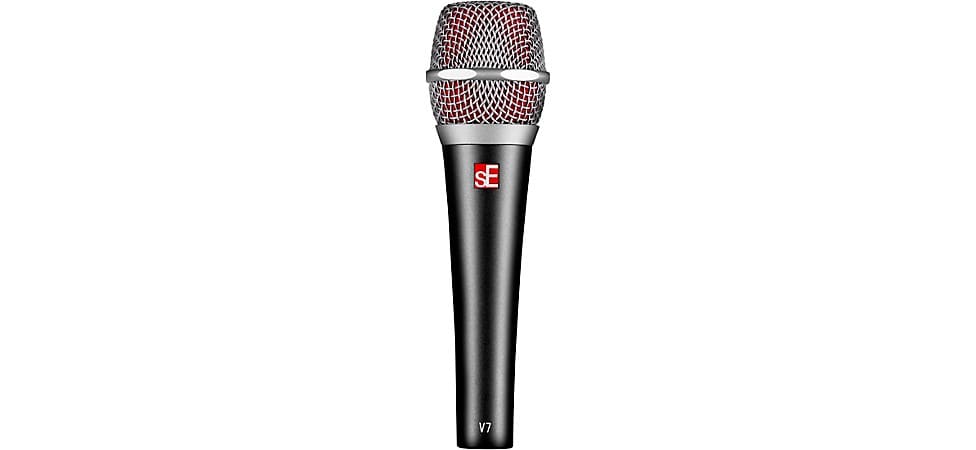
Shop Now: sE Electronics V7 Dynamic Microphone
A relative newcomer, compared to the previous two manufacturers, sE Electronics started out making gear for studio usage. Designed primarily for stage, the V7 definitely usable in the studio as well. This supercardioid pattern dynamic has been getting rave reviews from some major touring bands, and is a great choice for higher volume stages where off-axis rejection is important.
Sterling Audio P30
Why It's Cool: Sterling Audio’s P30 handheld vocal microphone combines the rugged durability of a traditional dynamic with the clarity and sensitivity of a condenser.
Things to Consider:
- Active electronics require +48V phantom power
- Ergonomic grip for stage-roaming vocalists
- Protective pouch and mic stand adapter included
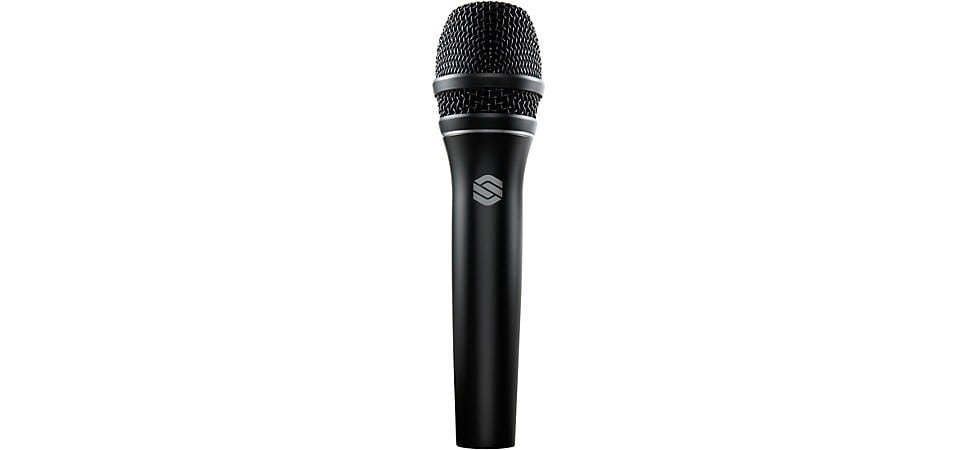
Shop Now: Sterling Audio P30 Dynamic Vocal Microphone
The P30 from Sterling Audio is unique in this group, being an active cardioid dynamic mic that requires phantom power for an internal preamp. This preamp is especially valuable in situations where you might want a little more gain or where there’s substantial RFI (radio frequency interference) in the environment, as it ensures less noise at the mixer’s mic preamp. It also makes it easier, especially on live sound mixers that use lower voltage supplies, to keep those mic pres at their “sweet spot.”
Shure SM57/SM58
Why It's Cool: The ubiquitous, tough-as-nails Shure SM57 and SM58 dynamic microphones deliver consistent, high-quality sound for vocals and instruments, on stage or in the studio.
Things to Consider:
- Includes microphone clip and soft storage case
- Built to United States MIL-SPEC standards
- Affordable enough to acquire a stereo pair
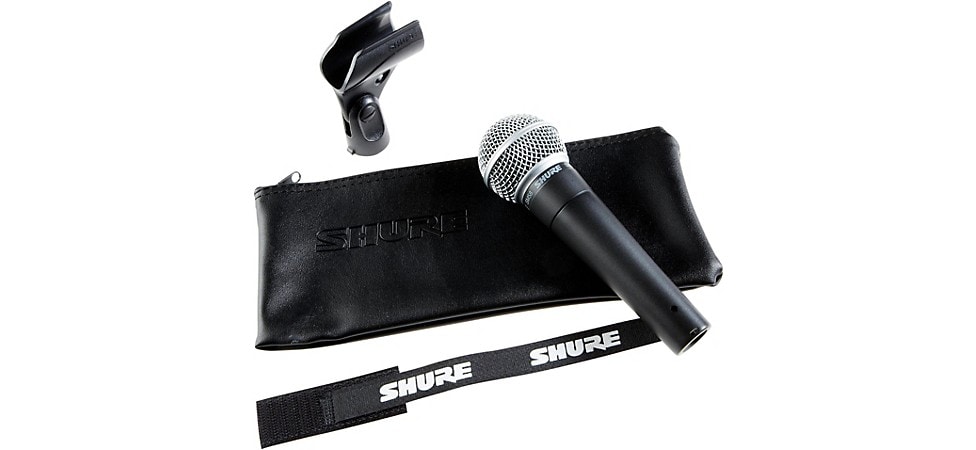
Shop Now: Shure SM58 Dynamic Microphone
Acknowledged as the world’s most popular mics, the Shure SM57 and SM58 are ubiquitous in recording studios and concert stages for very good reason. Both mics are virtually bulletproof, with the SM57 tough enough to be used on everything from guitar amps to kick drums, while the SM58’s versatility—and built-in windscreen—can handle vocal styles from unhinged screaming to whisper-like crooning. A common misconception is that the two mics are exceptionally similar in performance. The cartridge in each microphone is based on the same design, but there are subtle yet significant differences, due to the SM57 being mostly tailored for instruments, and the SM58 chiefly intended for vocals.
The performance variation is down to the different grilles. The SM58 uses a ball-shaped grille with a built-in pop filter to diminish plosives (those boomy “pa” sounds caused by air pressure striking the mic capsule). However, the small, flat grille of the SM57 is closer to the mic diaphragm than that of the SM58, resulting in a distinct proximity effect (increased low frequencies when a mic is positioned near the source sound), as well as bit more output above 5kHz. That said, part of the big fun is auditioning both mics for all kinds of applications, and, not surprisingly, the Shure SM58 is Guitar Center’s top-selling microphone.
Shure SM7B
Why It's Cool: Another Shure design that’s graced studios the world over, the SM7B is a universally renowned dynamic microphone for pod/broadcast, voiceover/ADR, sung vocals, guitar and bass cabinets, and more.
Things to Consider:
- -59dB sensitivity rating requires hefty amount of preamp gain
- Great for aggressive vocal styles, including rap and metal, with an integrated pop filter and shockmount
- Bass roll-off and presence boost switches increase sonic versatility
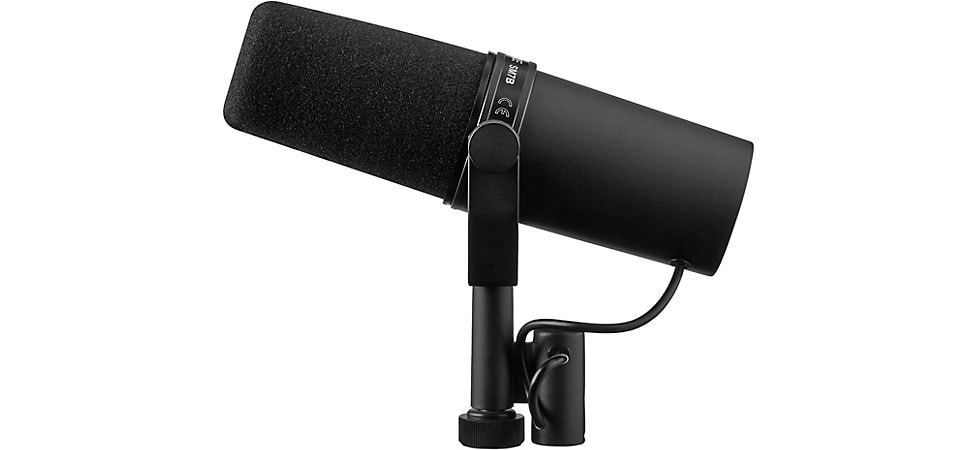
Shop Now: Shure SM7B Cardioid Dynamic Microphone
In broadcast booths, podcast studios and voice-over facilities, the Shure SM7B is a truly iconic mic that’s been made even more so by the podcasting boom. It delivers that rich, warm “radio voice” for broadcast/podcast applications. It’s also great for vocals, especially for singers who like to work in close proximity to the mic. Its exceptionally wide, flat response and frequency contour switches make for a lot of versatility. It’s been used for vocals by Michael Jackson, James Hetfield, John Mayer and many others in the studio. It’s related to the SM57 and SM58, as they’re all based on Shure’s original Unidyne III capsule, but the SM7B is entirely it’s own thing, not just the same capsule in a different package. Don’t feel that it’s restricted to vocals, though. The SM7B’s ability to handle high-SPL sources also makes it a great mic for guitar and bass cabs, as well as an excellent choice for kick drum. However, the SM7B doesn't offer a lot of input gain, which means it may require an additional booster to get the levels you want. Here's a pro tip: Check out the Shure SM7dB, which offers a built-in preamp that can be switched between 18dB and 28dB of pure, clean gain. As a bonus tip, if you’re a podcaster and love the sound of the SM7B, Shure’s MV7 offers the convenience of hybrid USB/XLR output and some powerful DSP, in a mic that is very much a descendant of the SM7B. Additionally, Shure's MV7+ expands upon the abilities of the MV7 with enhanced onboard DSP processing via the Shure MOTIV mobile application and LED audio level metering.
Interested in learning more about the SM7B? Check out Why Is the Shure SM7B So Popular?
Sennheiser MD 421-II
Why It's Cool: Sennheiser’s famous 421-II is an industry-standard drum mic (preferred on toms, especially), equally suited to electric guitar, vocals and most anything you throw at it.
Things to Consider:
- 5-position bass roll-off switch
- Appears to be side address, though is actually a front-address microphone
- Mic clamp and hard case included
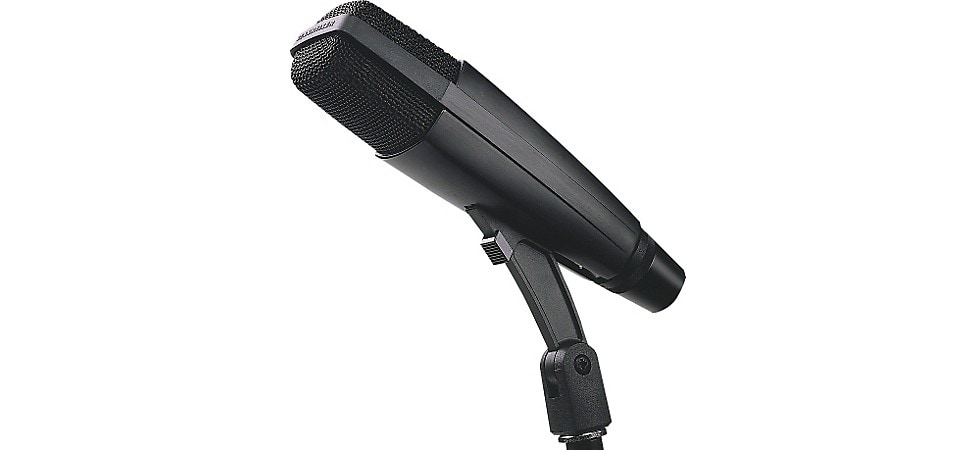
Shop Now: Sennheiser MD 421-II Dynamic Microphone
The first of two Sennheiser mics on this list, the venerable MD 421-II is another mic that has made its reputation both in the studio and on the stage. Both a great vocal mic and a superb mic for instruments, the MD 421’s distinctive profile is often seen in critical live situations on drums, guitar cabs and brass. Its five-position bass response switch and ability to handle high SPL makes for a great deal of sonic versatility.
Learn about the rich history of the MD 421 in our Spotlight on the Sennheiser MD 421 Dynamic Microphone.
Sennheiser MD 441-U
Why It's Cool: The Sennheiser MD 441-U is a high-end dynamic microphone boasting condenser-like performance, reproducing sounds with utmost fidelity and detail.
Things to Consider:
- 5-position low-end contour and presence boost switches
- Humbucking coil kicks electromagnetic interference (EMI)
- On the pricier end of the dynamic mic spectrum
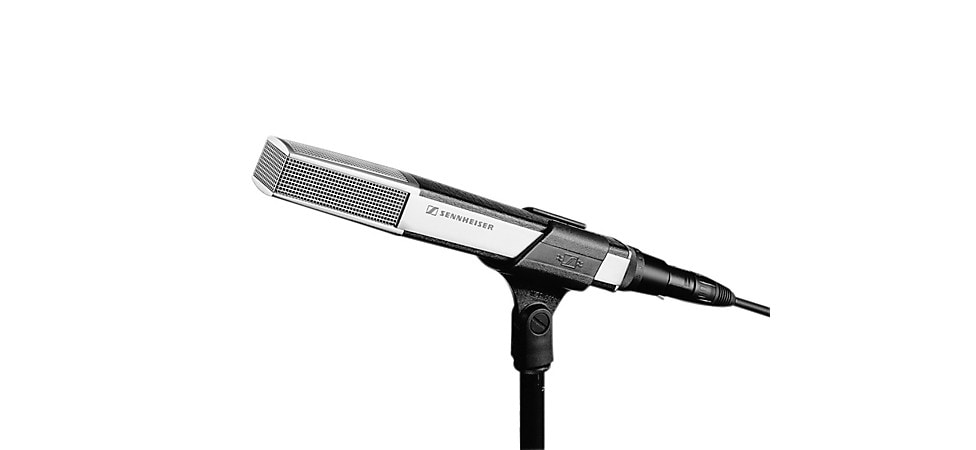
Shop Now: Sennheiser MD 441-U Dynamic Microphone
The Sennheiser MD 441-U has experienced quite the resurgence in recent years, both for vocals and instruments. All for good reason, we think. It’s an amazingly versatile dynamic mic that can find a place in almost any studio or stage situation. The MD 441-U delivers a clarity and response that you’d normally expect from a condenser with a very tight supercardioid polar pattern with serious side rejection, making it ideal for toms, individual brass and wind instruments, even vocals. For a deeper look, check out our recent article on the history of the 441-U, about just what makes it such a special mic.
Audix D6X
Why It's Cool: The D6X brings expanded tonal range to the legendary D6 dynamic mic.
Things to Consider:
- Three switch-selectable filters add versatility for new applications
- Transformerless design for audio purity and less interference
- VLM (Very Low Mass) capsule for superior transient response

Shop Now: Audix D6X Dynamic Instrument Microphone
The Audix D6 rightfully earned a place as one of the world's top mics for low-frequency-heavy sound sources like kick drums and bass amps. The Audix D6X takes everything we loved about the D6 and adds two additional sound profiles that expand the mic's capability beyond simply the low end, widening its applications to include percussion, guitar cabs and much more.
Our Top Condenser Microphone Picks
Georg Neumann introduced the first practical condenser mic—the CMV 3—in the late 1920s. His company, Neumann, has continued to be a major force in microphone development, and its legendary U 87 is still the topmost dream mic for recording aficionados everywhere. Condenser mics—which come in large-diaphragm (excellent for vocal recording) and small-diaphragm (splendid for tracking acoustic instruments, drum overheads and horns) varieties—are renowned for their sensitivity, sonic detail and expanded frequency range (as compared to most dynamic mics). If you want to learn more about what’s going on inside a condenser microphone, take a look at How Condenser Mics Work.
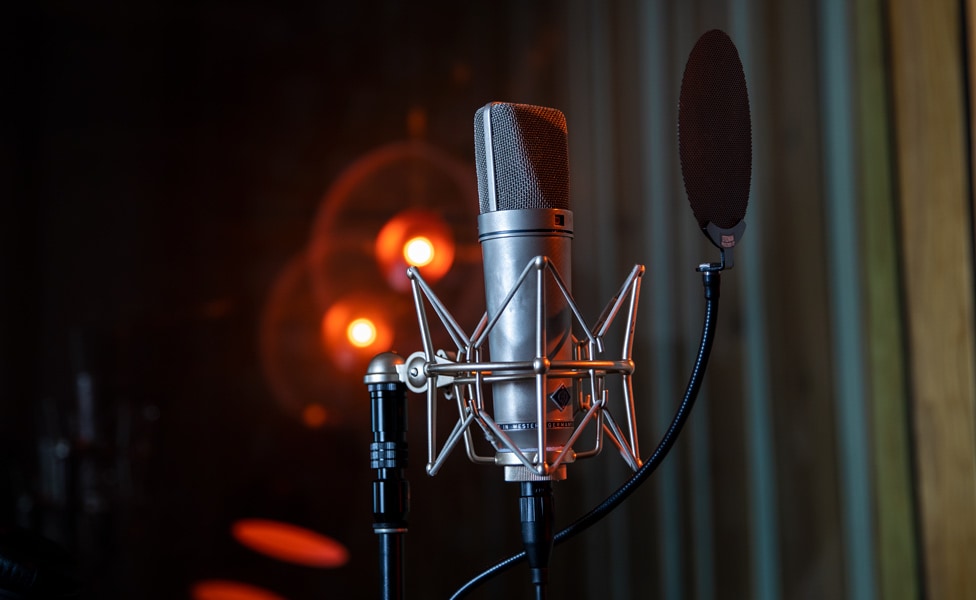
Pictured: Neumann U 87
Comparing the Best Condenser Mics
Here’s a selection of nine mics we consider to be the most versatile selections in current condensers. Some are extremely well known, but we’ve thrown in a few surprises we feel deserve a closer look.
|
Condenser Microphone |
Polar Pattern |
Frequency Response |
Applications |
|
Cardioid (C414/C214), figure-8, hypercardioid, omnidirectional, wide cardioid (C414 only) |
20Hz–20kHz |
Vocals, piano, strings, woodwinds |
|
|
Cardioid |
20Hz-20kHz |
Overheads, piano, acoustic guitar, percussion |
|
|
Cardioid |
20Hz–20kHz |
Vocals, electric guitar, acoustic guitar, brass |
|
|
Supercardioid |
20Hz–20kHz |
Vocals, woodwinds, percussion, acoustic guitar |
|
|
Cardioid |
20Hz-20kHz |
Vocals, piano, drums, acoustic guitar |
|
|
Cardioid |
20Hz–20kHz |
Vocals, acoustic guitar, overheads, piano |
|
|
Cardioid |
20Hz–20kHz |
Hi-hat, overheads, piano, acoustic guitar |
|
|
Cardioid |
20Hz–20kHz |
Vocals, electric guitar, drums, piano |
|
|
Cardioid, omnidirectional, figure-8 |
20Hz–20kHz |
Vocals, toms, overheads, acoustic guitar |
AKG C414/C214
Why It's Cool: The formidable AKG C414 is one of the greatest workhorse large-diaphragm condensers ever made, having captured thousands of hit recordings in virtually every genre.
Things to Consider:
- -6, -12 and -18dB stepped pad
- 40, 80 and 160Hz stepped high-pass filter
- High sensitivity and low self-noise
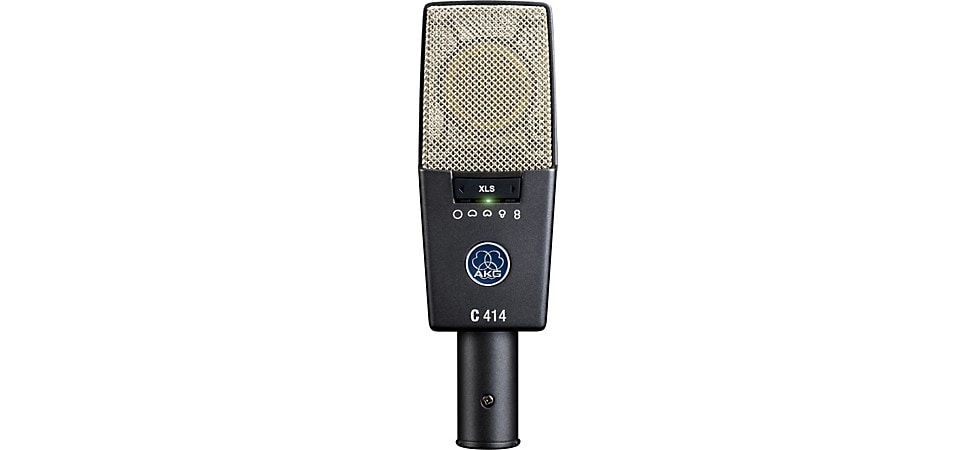
Shop Now: AKG C414 XLS Multi-Pattern Condenser Microphones
The AKG C414 is certainly a studio standard. You would, in fact, be hard-pressed to find a quality recording studio that doesn’t have a couple in their mic locker. With its dual-condenser capsule, it offers the classic multi-pattern choices of cardioid, wide cardioid, supercardioid, omni, and figure-8 polar patterns, plus three bass-cut filters and three different levels of pad. Like the legendary AKG C12 from which it descends, the C414 is renowned for its clarity and accuracy in all those modes. Its younger sibling, the C214, uses a single capsule—the same one as the C414—with a single cardioid pattern and single bass cut and pad, to deliver the same sound quality in a simpler package.
AKG C451 B
Why It's Cool: The AKG C451 B is a studio- and stage-ready small-diaphragm condenser with nearly six decades of celebrated sound under its belt.
Things to Consider:
- -10 and -20dB pads for distortion-free capture of loud sources
- Switchable 75Hz and 150Hz high-pass filters
- Includes a pouch, mic stand clip and windscreen

Shop Now: AKG C451 B Small-Diaphragm Condenser Microphone
Based on the iconic CK1-capsuled C451 EB from 1969, the present-day AKG C451 B offers the same precise, intricate sonic character as its famed predecessor. This small-diaphragm condenser has also been a stage favorite since the ’80s, thanks to its consistent sound reproduction and rugged reliability—even under trying conditions. The AKG C451 B shines particularly well on cymbals, where its impressive SPL tolerance, lightning-fast transient response and extremely low distortion work together to capture every bit of sparkle and detail from a harmonically complex source.
Audio-Technica AT2020
Why It's Cool: The Audio-Technica AT2020 is a no-nonsense, point-and-shoot condenser with a profound sonic signature at an unbeatable price.
Things to Consider:
- Great for musicians and engineers, as well as streamers and content creators
- Tolerates up to 144dB SPL without a pad
- Includes mic stand adapter and protective soft pouch
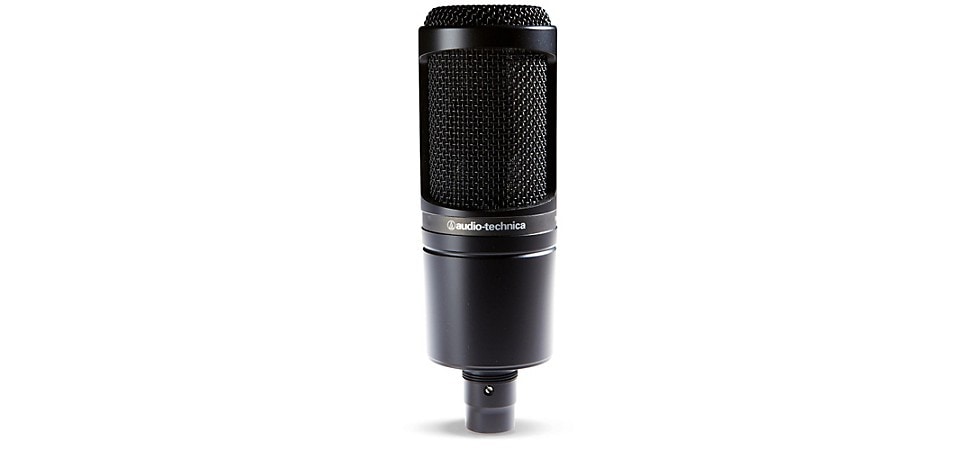
Shop Now: Audio-Technica AT2020 Large Diaphragm Condenser Microphone
The "My First Condenser Mic" for many musicians has been the Audio-Technica AT2020, and for good reason. This extremely affordable large-diaphragm condenser is a great all-rounder, working well on vocals, guitar amps, drum overheads, brass, woodwinds and acoustic instruments. While it may not have a lot of the bells and whistles of more expensive condensers, it's got solid sound, a durable build and serious reliability.
Neumann KMS 105
Why It's Cool: Legendary Neumann sound takes the stage in a ruggedly reliable handheld condenser—the KMS 105.
Things to Consider:
- Outstanding off-axis sound and feedback rejection
- Superior transient response relative to dynamic handhelds
- Fixed low-cut filter optimized for close miking
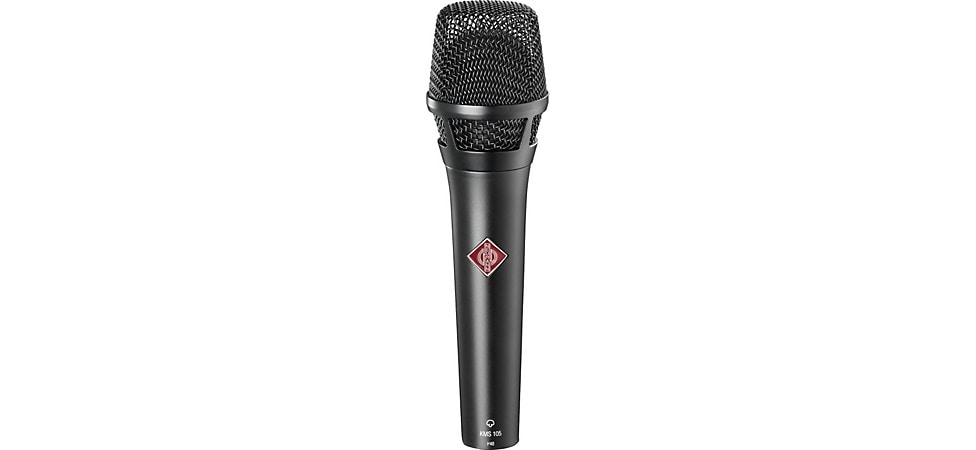
Shop Now: Neumann KMS 105 Condenser Microphone
First on our list is the Neumann KMS 105 handheld condenser vocal mic. Packing a studio-quality condenser capsule into a rugged, stage-friendly handheld, the KMS 105 helps cement Neumann’s reputation as the ne plus ultra of condenser mic manufacturers. Crisp and clean, with low handling noise and able to handle SPL so high (150dB) that your ears would be bleeding, it delivers a very tight supercardioid pattern for excellent off-axis rejection, minimizing feedback issues on loud stages.
RØDE NT1 5th Generation
Why It's Cool: The RØDE NT1 5th Generation is a stellar all-around studio condenser, featuring its signature high-fidelity sound and a host of cutting-edge digital inclusions.
Things to Consider:
- Analog XLR and digital USB outputs for versatile connectivity
- World’s first 32-bit float digital output allows repair of clipped recordings
- Fine-tune audio with effects accessed via RØDE app suite
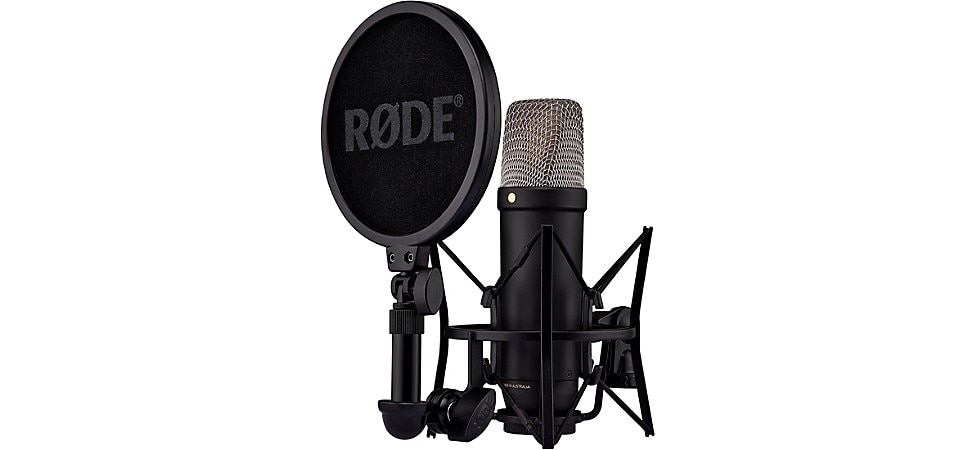
Shop Now: RØDE NT1 5th Generation Condenser Microphone
Since 1991, the RØDE NT1 has been a cost-effective favorite for musicians, producers and engineers, punching above its weight in sound quality and performance. Crystalline fidelity, high SPL tolerance and virtually nonexistent self-noise—not to mention budget-friendliness—have ensured its lasting popularity.
Now, the RØDE NT1 5th Generation large-diaphragm condenser continues to innovate with a patent-pending Dual Connect XLR/USB output, boasting “unclippable” 32-bit/192kHz A/D conversion. Should you decide to run this mic directly to your computer, an internal Revolution preamp boosts the signal to recordable levels—perfect for content creators who don’t necessarily need an audio interface. Plus, you can download the RØDE Connect and RØDE Central companion apps to access DSP-driven effects, including compression, a noise gate and high-pass filter, in addition to the Aural Exciter and Big Bottom from APHEX.
Austrian Audio OC16
Why It's Cool: The Austrian Audio OC16 cardioid condenser utilizes a capsule made in Vienna, pairing the best of cherished old-school mic technology with modern evolutions in components and manufacturing.
Things to Consider:
- 40Hz and 160Hz high-pass filters
- Up to 148dB SPL of tolerance
- Open, transparent sound quality with airy highs

Shop Now: Austrian Audio OC16 Cardioid Condenser Microphone
Austrian Audio produces cutting-edge microphones in the Viennese tradition, led by an engineering team with over 300 years of cumulative experience. At the core of Austrian Audio’s OC16 large-diaphragm condenser is a meticulously designed, handmade ceramic CKR6 capsule. It boasts a wide-open soundstage and clean, airy sonic signature that brings intimate nuance out of vocals and lifelike three-dimensionality from strings, woodwinds, percussion and more. The OC16 is a versatile studio companion inspired by some of the most prized vintage microphones ever built, and it’s able to take on practically any recording project you can throw at it.
Shure SM81
Why It's Cool: The Shure SM81 is a go-to small-diaphragm condenser for capturing the nuanced timbre of acoustic instruments.
Things to Consider:
- 3-position bass-cut switch
- -10dB pad for louder sound sources
- Flat frequency response for accurate reproduction

Shop Now: Shure SM81 Cardioid Condenser Microphone
Another mic that you’ve seen on stages everywhere, the Shure SM81 is an incredibly versatile condenser for instrument use. With a flexible, three-position tone contour switch, it’s especially good on acoustic guitars, pianos, woodwinds and drum overheads.
TELEFUNKEN TF17
Why It's Cool: Featuring a bold, mid-forward voice reminiscent of classic German mics, the TELEFUNKEN TF17 is a stellar modern FET condenser with a ton of sonic mojo.
Things to Consider:
- Extended lows, prominent mids and smooth highs
- Exceptional transient response for punchy recordings
- Includes shockmount, mic stand adapter, dust cover and box
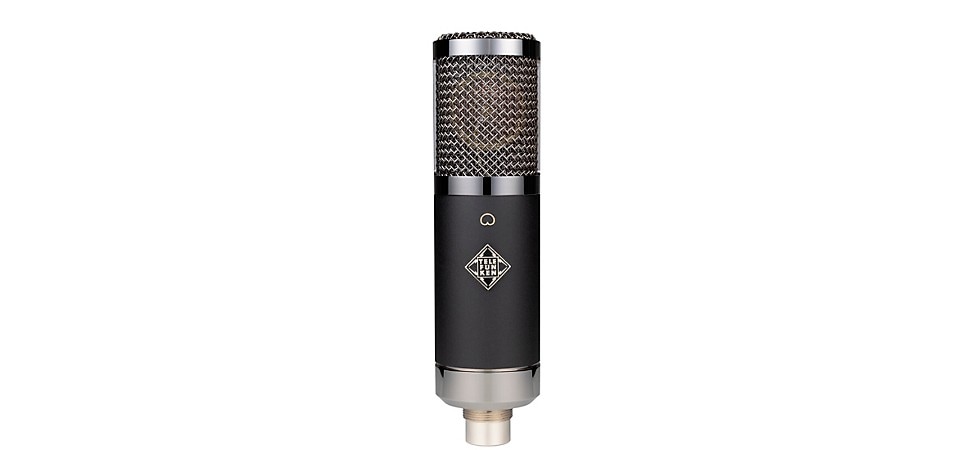
Shop Now: TELEFUNKEN TF17 Large-Diaphragm Condenser Microphone
TELEFUNKEN’s Alchemy Series brings the iconic sound of increasingly hard-to-find and astronomically pricey vintage microphones down to earth for the average engineer. The TF17 is a fixed-cardioid FET condenser housing premium components, including a K 47-style capsule and a Carnhill transformer. This sonically colorful mic features a hyped midrange response, lending itself to increased clarity on vocals, guitar and piano, while its ultrafast transient response retains the dynamic detail of drums and percussion. The TELEFUNKEN TF17 is an excellent choice if you crave vintage attitude paired with the best of modern design and construction.
Warm Audio WA-47jr
Why It's Cool: The WA-47jr by Warm Audio is a contemporary FET recreation of the illustrious U 47 tube condenser, using modern materials and tech to match the depth and detail of its inspiration.
Things to Consider:
- Includes -10dB pad to withstand SPLs of up to 157dB
- Switchable 70Hz high-pass filter
- Utilizes K 47-style capsule
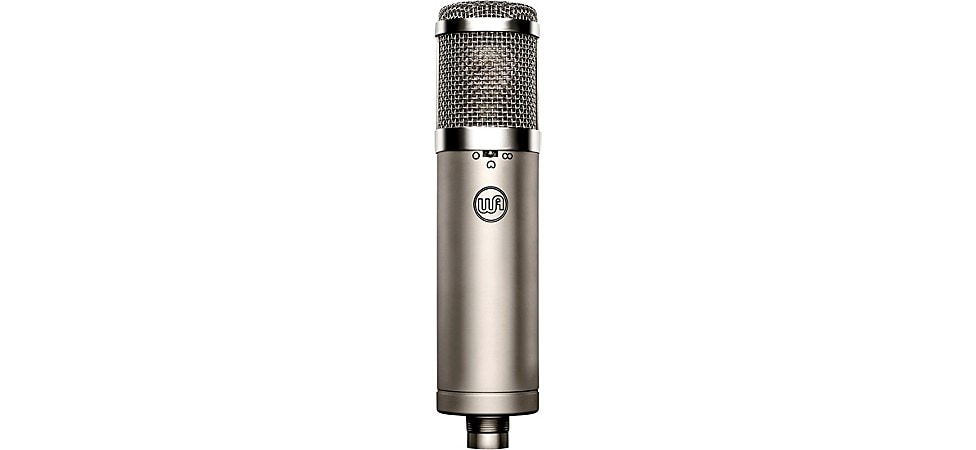
Shop Now: Warm Audio WA-47jr FET Condenser Microphone
Warm Audio is another relative newcomer who has built a reputation on creating versions of classic vintage condenser mics. Their WA-47jr is a transformerless, FET version inspired by the iconic Neumann U 47 mic heard on so many recordings over the past five decades. Engineered to come as close as possible to the original, it’s got the vibe and personality that many vocalists look for in a studio mic, and at a pretty incredible price.
Our Top Ribbon Microphone Picks
Ribbon microphones can capture extremely organic sounds that present vocals and instruments in perhaps their most natural “habitat” possible. In the old days, using a ribbon mic was quite risky, as their design was so fragile, a gush of wind (or a vocal plosive) could shred the ribbon and end your session. Happily, newer designs are so tough that you could position a ribbon mic in front of a 26" kick drum with no worries. (If you get your hands on a vintage ribbon mic, however, make sure it can handle the punishment before using it on drums, loud guitar amps, etc.) In addition to natural sound reproduction, ribbon mics offer fast transient response (awesome for snare hits and pizzicato strings), bidirectional (figure-8) polar pattern, excellent low-frequency performance and a significant proximity effect. Note that some traditional ribbon designs have a less-than-robust gain stage, so you may need a preamp to boost the signal. AEA—among other manufacturers—has preamps that are built specifically for ribbon mics, and active ribbons mics generally have a preamp built into the mic body.
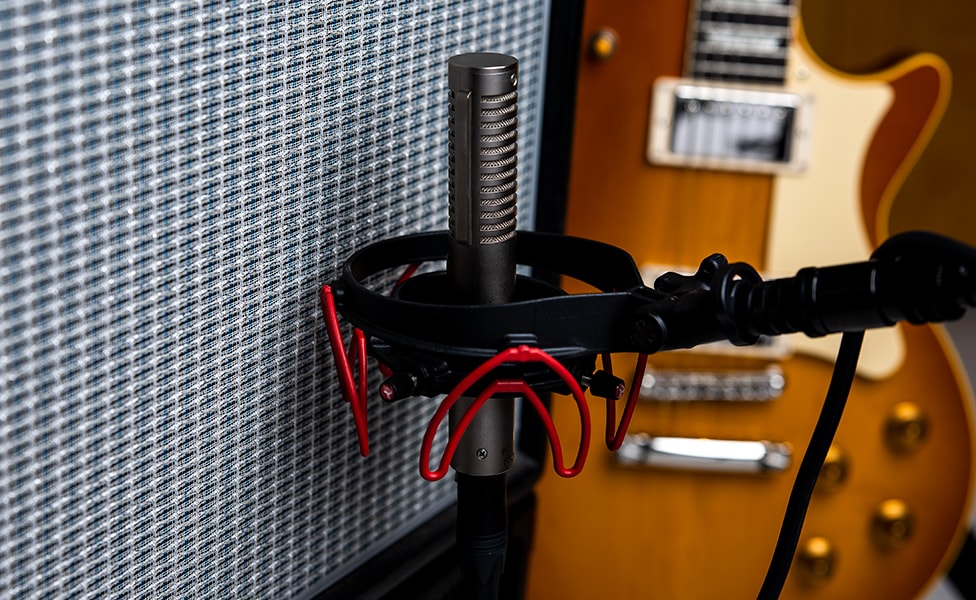
Pictured: Royer R-121 Ribbon Microphone
Comparing the Best Ribbon Mics
These selections highlight the strengths of ribbon mics, while offering a range of iconic, vintage-inspired designs to those that feature cutting-edge technology and a rethinking of classic ribbon design.
|
Ribbon Microphone |
Polar Pattern |
Frequency Response |
Applications |
|
Figure-8 |
20Hz-20kHz |
Overheads, room ambience, strings, orchestral ensembles |
|
|
Supercardioid |
20Hz–20kHz |
Vocals, acoustic guitar, snare, electric guitar/bass |
|
|
Figure-8 |
20Hz–20kHz |
Vocals, brass, orchestral instruments, room ambience |
|
|
Figure-8 |
20Hz–20kHz |
Vocals, double bass, piano, brass |
|
|
Figure-8 |
30Hz–15kHz |
Electric guitar, drums, brass, woodwinds |
|
|
Figure-8 |
20Hz–18kHz |
Vocals, drums, electric guitar, strings |
|
|
Figure-8 |
20Hz–20kHz |
Vocals, horns, drums, piano |
AEA NUVO N8
Why It's Cool: Ideal for distant miking, the AEA NUVO N8 reproduces the live tonality of instruments as they sound in a given acoustic environment.
Things to Consider:
- Designed to record instruments from a distance
- Broad, detailed reproduction captures nuanced ambience
- Perhaps best utilized as a stereo pair

Shop Now: AEA Microphones NUVO N8 Active Ribbon Microphone
The AEA NUVO N8 is their modern active ribbon that’s designed for instrument use. AEA refers to it as a “far-field” ribbon mic, in that it retains both low- and high-frequency response at a distance, which makes it an ideal choice for covering instrumental sections, like strings or brass. It’s also a great choice for stereo recording or drum overheads, either in an X/Y pattern or as a Blumlein pair.
AEA KU5A
Why It's Cool: AEA’s innovative KU5A active ribbon microphone pinpoints sound sources with a tight polar pattern on stage or in the studio.
Things to Consider:
- Classic ribbon tone with minimized room ambience and bleed
- Rounded mids and highs tame harsh sources
- Designed for isolated close miking
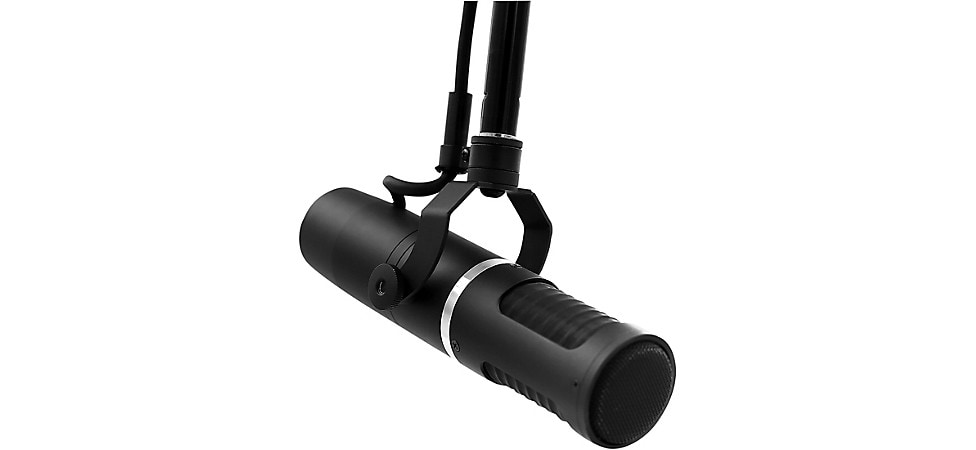
Shop Now: AEA Microphones KU5A Supercardioid End-Address Microphone
Front-address ribbon mics are not super common, due to the nature of how ribbon capsules work. The AEA KU5A takes the idea and turns out a modern ribbon mic with a supercardioid polar pattern that is superb for vocals and instrument use while offering excellent off-axis rejection. It delivers all the classic ribbon warmth and body, but in a package that enables easier use in live situations or critical studio sessions where you don’t want to isolate everything, but still want to minimize bleed.
AEA R44C
Why It's Cool: The AEA R44C is a museum-quality replica of the famed RCA 44, recreating a timeless sound that’s a pivotal part of recording and broadcast history.
Things to Consider:
- Softened top end for classic ribbon color
- Active 18dB level boost is compatible with most preamps
- Pronounced proximity effect—just like the original
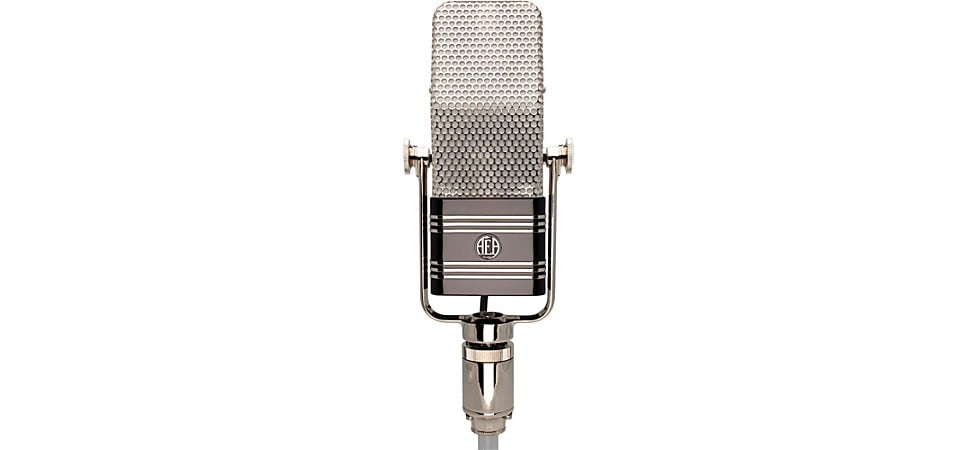
Shop Now: AEA Microphones R44C Bidirectional Big Ribbon Studio Microphone
You may be saying to yourself, “My, but there are a lot of AEA mics in this section!” That’s likely because Wes Dooley, founder at AEA, is passionate about both the past and future of the ribbon and has designed a broad range of ribbon mics to suit different applications. We’ll start with the past and the AEA R44C. This is pretty much an exact replica of the much-in-demand RCA 44 ribbon mic. Dooley started his career sourcing parts to rebuild vintage RCAs, and his love of them shows in this mic. If you aspire to replicate some of the most stirring and lasting vocal sounds of the 20th century, this is a mic that deserves to be in your collection.
AEA R84A
Why It's Cool: The AEA R84A is a versatile ribbon microphone that excels on a variety of sources in close- or distant-miked scenarios.
Things to Consider:
- Smooth, sweeping high end and powerful bass
- Manageable proximity effect can be used deliberately to beef up anemic sounds
- Active 12dB boost helps record quieter sources with ease
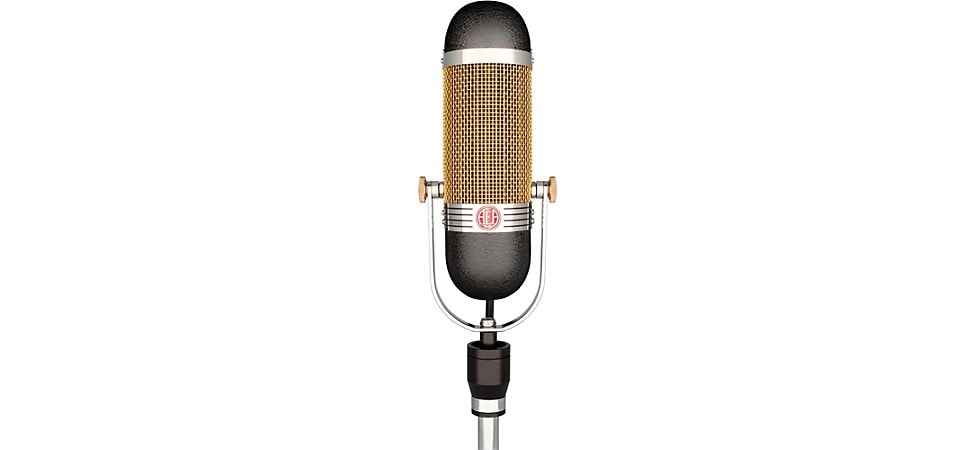
Shop Now: AEA Microphones R84A Active Ribbon Microphone
When AEA designed the R84 series, they started with the tonality of the classic R44 and extended the frequency response while reducing proximity effect. Both of these make it especially effective as a mid-distance or close-distance mic for instruments and vocals. The “A” in R84A stands for “active,” and the phantom-powered internal preamp adds 12dB of gain for increased ease of use with lower-gain mic preamps on mixing boards.
Royer R-10/R-121
Why It's Cool: The Royer R-121 and sibling R-10 are elite modern microphones maintaining the rich sonic palette of classic vintage ribbons with rugged, dynamic-like performance.
Things to Consider:
- Patented offset-ribbon technology increases SPL tolerance to 135dB
- Flat, balanced frequency response for natural-sounding recordings
- Old-school color with contemporary durability

Shop Now: Royer R-121 Ribbon Microphone
The Royer R-121 has been one of the most visible ribbon mics over the past couple of decades and has been the flagship product for Royer Labs. It’s widely held as the mic most responsible for bringing about the so-called “ribbon resurgence,” and was the first modern redesign of the technology to hit the wider market. The natural sound of the R-121 minimizes the amount of EQ necessary, and its patented offset ribbon technology helps maintain full-frequency response, even in the face of extreme SPL. If you want a Royer ribbon (and who doesn’t?) the R-10 uses the same ribbon design and offset ribbon technology, but is designed and engineered to be a more affordable option.
sE Electronics Voodoo VR1
Why It's Cool: The Voodoo VR1 by sE Electronics contains the magical smoothness of a ribbon, the three-dimensional top-end clarity of a condenser and a price tag that’s hard to ignore.
Things to Consider:
- Extended high-frequency range for additional detail
- Passive electronics tolerate up to 135dB SPL
- Includes shockmount and wooden storage case
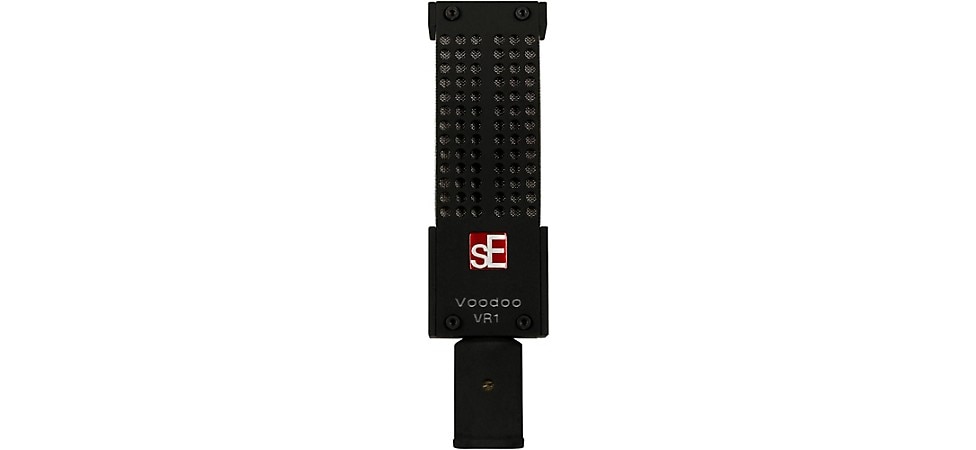
Shop Now: sE Electronics Voodoo VR1 Ribbon Microphone
The sE Electronics Voodoo VR1 offers a ribbon capsule design that uses a unique mechanical diffusor to extend the frequency range somewhat beyond the normal point at which ribbons start to roll-off their highs. It’s a great choice if you love that natural ribbon warmth, but want just a little more “air” in your sound.
Warm Audio WA-44
Why It's Cool: The sultry sounds of an iconic 1930s ribbon microphone are alive and well in the Warm Audio WA-44—a faithful homage to a legendary transducer.
Things to Consider:
- Deep lows with a rolled-off top end
- Powerful proximity effect
- Consider a capable mic stand to hold its weight (6.2 lb.)
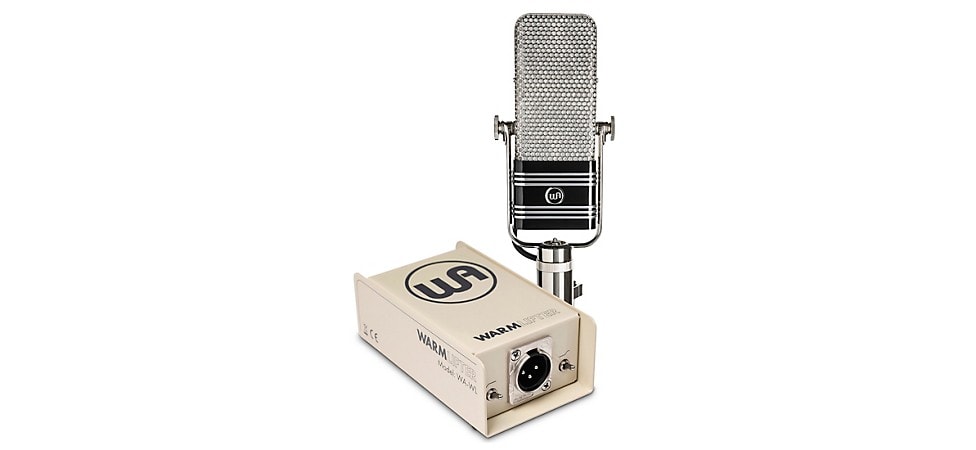
Shop Now: Warm Audio WA-44 Ribbon Microphone with Warm Lifter Preamp
Featuring a custom, vintage-matched aluminum ribbon and USA CineMag output transformer, the Warm Audio WA-44 revives the renowned sound of the ’30s and ’40s to a tee. Its distinguished tone is undeniably “ribbon,” with bold bass, mellow mids and hushed highs—perfect for taming harshness and rendering virtually any source smooth and lush. “Warm” is in the name, so if you’re looking to capture the unmistakable color of an old-school ribbon microphone, the WA-44 does not disappoint.
Our Top Stereo Microphone Picks
Stereo microphones are a one-stop solution to capturing an immersive sound field that can emulate the perspective of our very own ears. They’re also fun to use, because you can position one stereo mic to record an entire band, move the mic around a selected source to play with the effects of room ambience, plop it in front of a horn or string section to quickly achieve a suitably natural recording, or do whatever your imagination cooks up. Here are two stereo ribbon mics and a stereo condenser microphone to help you experiment with the ambient wonders of the left-right sonic spectrum.
Comparing the Best Stereo Mics
|
Stereo Microphone |
Polar Pattern |
Frequency Response |
Applications |
|
Figure-8 |
20Hz–20kHz |
Overheads, strings, piano, group vocals |
|
|
Cardioid, omnidirectional, figure-8 |
20Hz–20kHz |
Acoustic guitar, overheads, vocals, piano |
|
|
Figure-8 |
30Hz–15kHz |
Drums, horn sections, string sections, piano |
Royer SF-12/SF-24
Why It's Cool: The Royer SF-12 (passive) and SF-24 (active) stereo ribbon microphones are arranged in a Blumlein pair to record instruments and ensembles as you’d hear them in the room.
Things to Consider:
- Immersive stereo imaging with balanced off-axis ambience
- Can use either capsule in mono
- Near-zero self-distortion means recorded signals take well to creative EQ

Shop Now: Royer Labs SF-12 Passive Stereo Ribbon Microphone
Royer Labs SF-12 (passive) and SF-24 (active) stereo ribbon mics are essentially a straight-up Blumlein pair (as we mentioned above, check our article on how ribbons work for a little more about the concept), placed in a single shell, which simplifies placement and use, because you don’t need to align the mics or use an unwieldy arrangement of stands and shockmounts to make it work.
AEA R88A
Why It's Cool: The AEA R88A stereo ribbon mic boasts a wide frequency response and uniform low end for detailed, captivating recordings.
Things to Consider:
- Capsules arranged as a fixed Blumlein pair
- Optimized for distant miking from 16" to 20'
- Effortless, realistic-sounding solution to complex recording situations (e.g., instrumental ensembles)
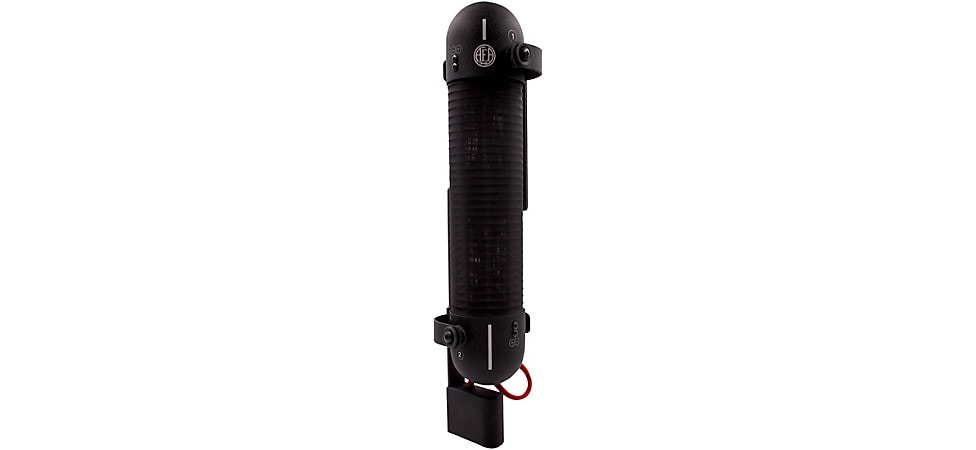
Shop Now: AEA Microphones R88A Active Stereo Ribbon Microphone
Using a pair of the same “Big Ribbon” capsule as AEA’s R84 series, the R88 (passive) and R88A (active) deliver a full-frequency stereo experience with the same “far-field” response as its mono cousin. This is a seriously great mic for capturing live performances in an amazingly natural way.
Avantone Pro CK-40
Why It's Cool: With independent capsule outputs and polar pattern selections, the Avantone Pro CK-40 condenser performs like two microphones in one, for an array of mono and stereo miking applications.
Things to Consider:
- Top capsule rotates up to 90° off-axis from bottom capsule
- X/Y, mid-side and Blumlein stereo arrangements in a single microphone
- 80Hz high-pass filter and -10dB pad cannot be simultaneously engaged

Shop Now: Avantone Pro CK-40 FET Stereo Multi-Pattern Microphone
While Avantone Pro is another relative newcomer, we have to say the CK-40 is one of the more intriguing mic designs. With a pair of pressure-gradient capsules, multiple pickup patterns and the ability to rotate the top capsule up to 90 degrees, it’s possible, with this one mic to do a Blumlein pair, mid-side stereo or basic X/Y coincident pair stereo recordings. The best thing is that it’s priced to make it easy to explore the single-mic stereo capture scene.
Mic It Up
Whether you’re looking for a couple of microphones that can handle a lot of different applications or want to assemble a mic collection worthy of a pro studio, we hope this guide offers the knowledge and options to achieve your goals. However, if you want a little more help to find the perfect mic—or mics—call our Gear Advisers, or stop into your local Guitar Center store and talk to the associates in the Pro Audio department. They’ll be happy to help. In addition, new articles about recording, audio production, live sound, podcasting and other essential subjects are added to our Riffs blog regularly. Keep checking in for inspiration and chops-building tools.
.jpeg)






